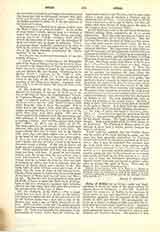

Jonas of Bobbio (or OF SUSA), monk and hagiographer, b. about the close of the sixth century at Sigusia (Susa) in Piedmont; d. after 659. In 618 he entered the monastery of Bobbio in the province of Pavia where he was soon appointed to a position of confidence, probably that of secretary to the abbots Attala (d. 627) and Bertulf. He accompanied the latter on a journey to Rome in 628, and after his return took up his permanent abode in Gaul. Appealed to by St. Amandus for assistance in his missionary work among the heathen, he labored in what is now Belgium and Northern France. His presence in this district was the occasion of his composition of the life of St. Vaast, the first Frankish Bishop of Arras (Pas-de-Calais). Owing to a promise made to the local monks during a short visit to the monastery of Bobbio in 639, he wrote between 640 and 643 his principal literary work, the “Life of St. Columbanus”. In 659, when he was sent by the queen-regent Bathildis on a mission to Chalon-sur-Saone, he was abbot of a monastery which cannot now be determined. During this journey he sojourned for a few days at the monastery of St. John of Reome (now Moutier-Saint-Jean) in the Diocese of Langres. To comply with a request made by the monks on this occasion he wrote the life of their founder, St. John. The work to which Jonas chiefly owes his literary fame comprises, besides the “Life of St. Columbanus”, the lives of the abbots Attala and Bertulf of Bobbio, Eustace of Luxeuil, and the Abbess Burgundofara (or Fara) of Evoriac (now Faremoutiers). The biographies of Columbanus and his successors, though written in a bombastic style, contain invaluable historical information. Jonas arrived at Bobbio but three years after Columbanus’s death, and based his invaluable account of the great Irish saint on the testimony of persons who had known him intimately. Eustace, Attala, and Bertulf, he knew personally. Bede incorporated these lives into his ecclesiastical history, while Flodoard turned that of St. Columbanus into hexameter verse. The “Life of St. Fara” is chiefly an account of the miraculous events alleged to have occurred during this saint’s rule at Evoriac. The works of Jonas, exclusive of the “Life of St. Vaast”, are printed in P.L., LXXXVII, 1011-88; better edition by Krusch in “Mon. Germ. Hist.: Script. Rer. Mer.”, III, 406-13, 505-17; IV, 61-152 (Hanover, 1896 and 1902).
N. A. WEBER

